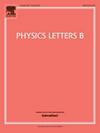多体问题中ADAPT-VQE收敛路径的激发态:应用于核配对问题和[公式省略]分子解离
IF 4.5
2区 物理与天体物理
Q1 ASTRONOMY & ASTROPHYSICS
引用次数: 0
摘要
提出了一种求解多体相互作用系统低洼激发态的量子计算算法。利用自适应导数集合伪trotter Ansatz变分量子本征求解器(ADAPT-VQE)向多体问题基态收敛路径中选取的状态子空间中的量子空间对角化方法,得到了近似本征态。这种方法被证明是精确的,在获得基态所需的量子资源方面只有很小的开销。我们还证明了量子算法可以用来促进ADAPT-VQE方法本身的收敛性。该技术已成功应用于类粒子配对和中子-质子配对。最后,H4分子的解离也说明了该技术,证明了其准确性和通用性。本文章由计算机程序翻译,如有差异,请以英文原文为准。
Excited states from ADAPT-VQE convergence path in many-body problems: Application to nuclear pairing problem and H4 molecule dissociation
A quantum computing algorithm is proposed to obtain low-lying excited states in many-body interacting systems. The approximate eigenstates are obtained by using a quantum space diagonalization method in a subspace of states selected from the convergence path of the ADAPT-VQE (adaptive derivative-assembled pseudo-Trotter Ansatz variational quantum eigensolver) towards the ground state of the many-body problem. This method is shown to be accurate with only a small overhead in terms of quantum resources required to get the ground state. We also show that the quantum algorithm might be used to facilitate the convergence of the ADAPT-VQE method itself. Successful applications of the technique are made to like-particle pairing as well as neutron-proton pairing. Finally, the molecule’s dissociation also illustrates the technique, demonstrating its accuracy and versatility.
求助全文
通过发布文献求助,成功后即可免费获取论文全文。
去求助
来源期刊

Physics Letters B
物理-物理:综合
CiteScore
9.10
自引率
6.80%
发文量
647
审稿时长
3 months
期刊介绍:
Physics Letters B ensures the rapid publication of important new results in particle physics, nuclear physics and cosmology. Specialized editors are responsible for contributions in experimental nuclear physics, theoretical nuclear physics, experimental high-energy physics, theoretical high-energy physics, and astrophysics.
 求助内容:
求助内容: 应助结果提醒方式:
应助结果提醒方式:


